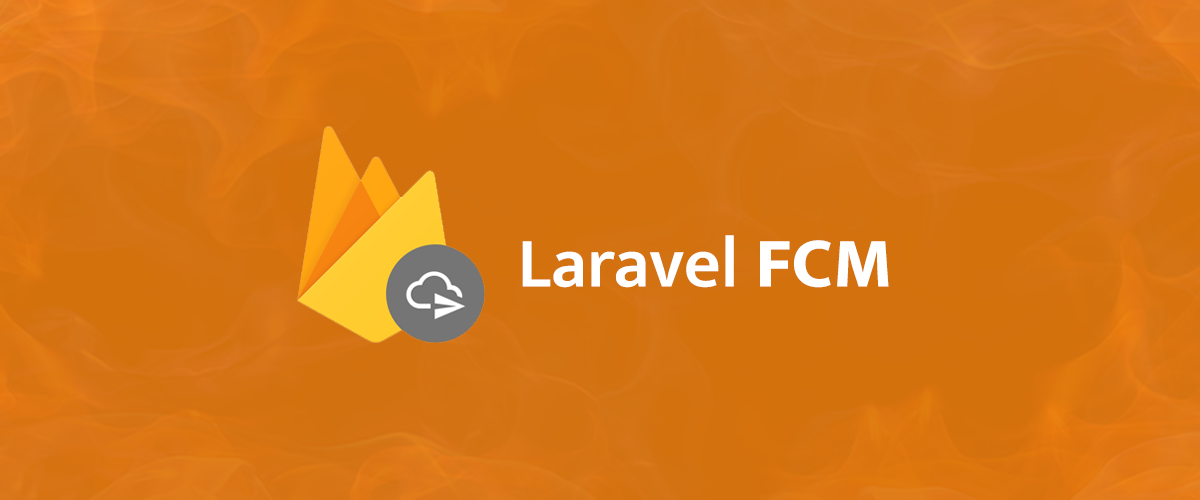nylo / laravel-fcm-channel
Send Firebase Cloud Messenging (FCM) notifications from Laravel.
Fund package maintenance!
agordn52
Installs: 1 183
Dependents: 0
Suggesters: 0
Security: 0
Stars: 3
Watchers: 1
Forks: 1
Open Issues: 1
pkg:composer/nylo/laravel-fcm-channel
Requires
- php: >=8.0
- illuminate/support: ~5.8.0|6.x|7.x|8.x|9.x|10.x|11.x|12.x
- kreait/firebase-php: ^7.12
Requires (Dev)
- laravel/pint: ^1.27
- orchestra/testbench: ^8.0|^9.0|^10.0
- phpunit/phpunit: ^10.0|^11.0
README
Manage FCM notifications with ease using Laravel FCM Channel.
Contents
This package has been built to make sending FCM messages easier.
There is also a Flutter package you can use to save time for mobile development.
Overview:
- Add multiple (FCM) devices to a model in Laravel
- API Routes for adding new devices to a model
- Send FCM notifications using the new "
fcm_channel" in your Laravel Notification - Flutter mobile package to help speed up your development with notifications
Installation
First, install the package via composer:
composer require nylo/laravel-fcm-channel
The package will automatically register itself.
Configuration
Run the install command.
php artisan laravelfcm:install
This will add a (laravelfcm.php) config file
ServiceProvider to your app.php: App\Providers\FcmAppServiceProvider::class
Then, ask if you want to run the migrations.
Here are the tables it will migrate:
- fcm_devices
Add your Google Service Account to config/firebase_service_account_json.
<?php return '{ "type": "service_account", "project_id": "123456789-me908", "private_key_id": "123456789", "private_key": "-----BEGIN PRIVATE KEY-----\123456789\n-----END PRIVATE KEY-----\n", "client_email": "firebase-adminsdk-9p9z7@123456789-me908.iam.gserviceaccount.com", "client_id": "123456789", "auth_uri": "https://accounts.google.com/o/oauth2/auth", "token_uri": "https://oauth2.googleapis.com/token", "auth_provider_x509_cert_url": "https://www.googleapis.com/oauth2/v1/certs", "client_x509_cert_url": "https://www.googleapis.com/robot/v1/metadata/x509/firebase-adminsdk-9p9z7%123456789-me908.iam.gserviceaccount.com", "universe_domain": "googleapis.com" }';
You can download your Google Service Account in your Firebase Project Settings > Service Accounts > Manage service account permissions > "Actions (three dots) - Manage keys" > Add Key > Create New Key.
Then, paste the JSON into the firebase_service_account_json file like in the above example.
Note: It's best to keep the key values in a
.envfile. Don't commit the JSON file to your repository.
You can configure this package in config/laravelfcm.php.
Configuring your Model
Add the HasFcmDevices trait to your User Model.
<?php namespace App\Models; use Illuminate\Database\Eloquent\Factories\HasFactory; use Illuminate\Foundation\Auth\User as Authenticatable; use Nylo\LaravelFCM\Traits\HasFcmDevices; // Use HasFcmDevices trait use Laravel\Sanctum\HasApiTokens; class User extends Authenticatable { use HasApiTokens, HasFactory, HasFcmDevices; // Add it to your model ... }
This package uses laravel/sanctum as the default middleware for your model.
However, if you want authenticate using a different middleware, you can update the middleware key in your config/laravelfcm.php file.
API Endpoints
This package adds API endpoints to your router to allow your application to store devices.
Postman collection example
Store a device
The default endpoint: /api/fcm/device
Method: PUT
Authorization: "Bearer {{Sanctum Token}}"
Add this header key: X-DMeta
Value:
{
"uuid": "12992", // required, a uuid which should be from the device.
"model": "iPhone", // optional
"version":" 12", // optional
"display_name": "Tim's iPhone", // optional
"platform": "IOS" // optional
}
Payload body:
{
"is_active": 1, // optional, use this key to define if a device is active or not
"fcm_token": "kjnsdmnsdc0sdco23" // optional, when you have an FCM token for the device, use this key in the payload
}
This will add a new FCM device for a User.
If you provide a fcm_token in the payload then the user will be able to receive push notifications.
Usage
Sending Notifications
To send a notification using the FCMChannel, first create a Notification in your Laravel project.
php artisan make:notification ParcelDispatchedNotification
After creating your notification, add a fcm_channel to the array below.
/** * Get the notification's delivery channels. * * @param mixed $notifiable * @return array */ public function via($notifiable) { return [ 'mail', 'fcm_channel', // add this ]; }
Then, add the following snippet to your notification class.
/** * Get the fcm representation of the notification. * * @param mixed $notifiable * @return mixed */ public function toFcm($notifiable) { return (new FcmMessage) ->title('Parcel Dispatched') ->body('Your parcel has been dispatched'); // or like this return [ 'title' => config('app.name'), // Title of the notification 'body' => $title, // Body of the notification ]; }
Send a Notification
$user->notify(new ParcelDispatchedNotification($order));
This will send a notification to the user's devices.
Control if an FCM notification should be sent
In some scenarios, you may only want to notify a user based on a condition.
In your User model class, add the following snippet.
<?php ... class User { use HasFcmDevices; /** * Determines if the devices can be notified. * * @return bool */ public function canSendNotification($notification) : bool { // $notification - Will return the type of Notification you are trying to send. // E.g. $user->notify(new NewsLetterNotification($order)); // $notification = 'App\Notifications\NewsLetterNotification'; // // The canSendNotification method will be called before dispatching the fcm notification. // If you return True, it will send. If you return False, it will not send. if ($notification == 'App\Notifications\NewsLetterNotification') { return ($this->receives_news_letters == true); // example condition } return true; } }
By default, the
canSendNotificationmethod will returntrue.
Notification Object
Here are the attributes you can assign to a FcmMessage.
$notification = new FcmMessage(); $notification->title('My App'); // Title of the notification $notification->body('Hello, World!'); // Body of the notification $notification->image('https://example.com/image.jpg'); // Image URL $notification->badge(1); // Badge number $notification->sound('custom_sound'); // Sound to play (by default it will play the 'default' sound) $notification->data(['key' => 'value']); // Custom data $notification->withoutDefaultSound(); // Disable the default sound $notification->priorityHighest(); // Set the priority to 'high' $notification->priorityLowest(); // Set the priority to 'low'
Relationships
When your model is using the HasFcmDevices trait you can call the following methods.
<?php $user = User::first(); $user->fcmDevices;// Returns all the FCM Devices that the user owns // send notification $fcmDevice = $user->fcmDevices->first(); $message = (new FcmMessage) ->title('My App') ->body('Hello, World!'); $fcmDevice->sendFcmMessage($message); // or like this $fcmDevice->sendFcmMessage([ 'title' => 'My App', 'body' => 'Hello, World!' ]);
Flutter Plugin
Need to send notifications to a Flutter application?
Check out the official repository for that project here.
Changelog
Please see CHANGELOG for recent changes.
Security
If you discover any security-related issues, please email hello@Nylo.com instead of using the issue tracker.
Contributing
Please see CONTRIBUTING for details.
Credits
License
The MIT License (MIT). Please view our License File for more information.

